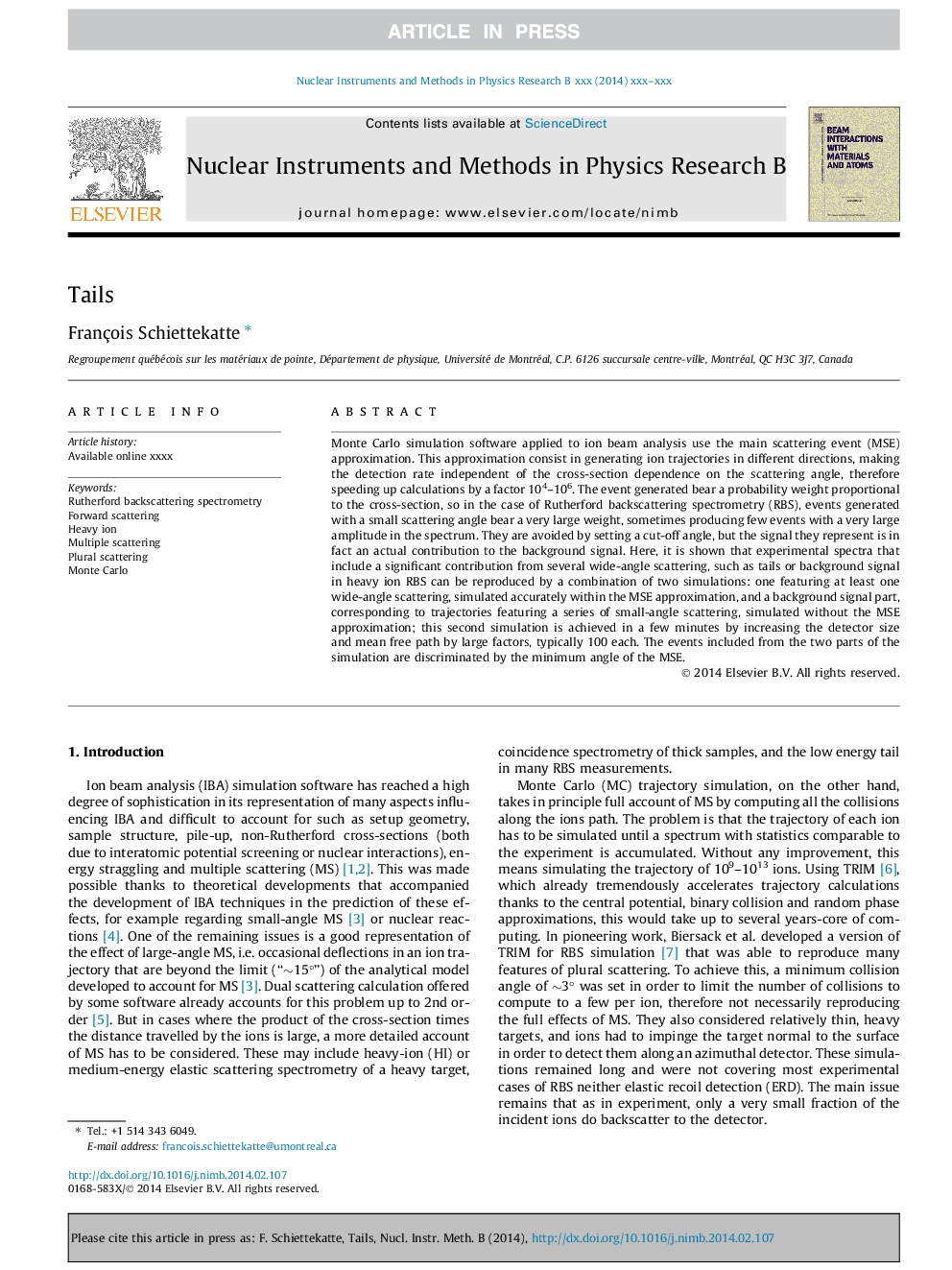| Article ID | Journal | Published Year | Pages | File Type |
|---|---|---|---|---|
| 8041718 | Nuclear Instruments and Methods in Physics Research Section B: Beam Interactions with Materials and Atoms | 2014 | 7 Pages |
Abstract
Monte Carlo simulation software applied to ion beam analysis use the main scattering event (MSE) approximation. This approximation consist in generating ion trajectories in different directions, making the detection rate independent of the cross-section dependence on the scattering angle, therefore speeding up calculations by a factor 104-106. The event generated bear a probability weight proportional to the cross-section, so in the case of Rutherford backscattering spectrometry (RBS), events generated with a small scattering angle bear a very large weight, sometimes producing few events with a very large amplitude in the spectrum. They are avoided by setting a cut-off angle, but the signal they represent is in fact an actual contribution to the background signal. Here, it is shown that experimental spectra that include a significant contribution from several wide-angle scattering, such as tails or background signal in heavy ion RBS can be reproduced by a combination of two simulations: one featuring at least one wide-angle scattering, simulated accurately within the MSE approximation, and a background signal part, corresponding to trajectories featuring a series of small-angle scattering, simulated without the MSE approximation; this second simulation is achieved in a few minutes by increasing the detector size and mean free path by large factors, typically 100 each. The events included from the two parts of the simulation are discriminated by the minimum angle of the MSE.
Keywords
Related Topics
Physical Sciences and Engineering
Materials Science
Surfaces, Coatings and Films
Authors
François Schiettekatte,
